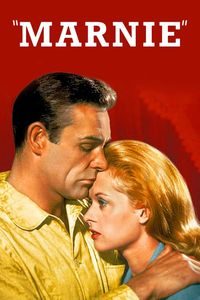Roar (1981)
(In French, On Cable TV, October 2019) Oh boy, what a movie. The story of the making of Roar is amazing in itself, but even if you see the movie absolutely cold you’ll be gobsmacked at what you will be seeing: a family of actors in their own rural home, interacting with a menagerie of wild cats running all around them. If you’ve grown up (like, well, everybody) with a healthy respect and primal fear of lions, tigers and panthers, that’s amazing enough. It’s hard not to be impressed by the way the actors and the animal share physical space with seemingly no barrier or protection: Far from the usual treatment of actors sharing the screen with dangerous animals, our protagonists make full physical contact with the beasts. It’s so captivating that it does take a while to realize that the story here hangs on only by the flimsiest of threads: It’s about a family joining their father in a big cat-infested house in Africa, and learning to like the animals. (Animal psychology is arguably more important in Roar than human psychology.) The scene-by-scene plotting is disjointed at best, with very little narrative cohesion from one shot to another. The editing is choppy. It feels improvised. These impressions are not accidental when you start reading about the amazing behind-the-scenes story of Roar and how it came to be. The quick version goes like this: While shooting a film in Africa, wife-and-husband Tippi Hedren and Noel Marshall came to like big cats and decided to illegally host as many of them as they could in their remote California residence. After altering the terrain to look like Africa and bringing together as many at 71 lions, 26 tigers, 10 cougars, 9 panthers and a host of other dangerous animals (including four Canadian geese potentially being the worst of them), they started shooting a movie with the noble goal of bolstering preservation efforts for big cats in Africa. Things, however, did not go as planned: The shooting took five years, not helped along by the animals’ lack of acting cooperation. There was a catastrophic flood, ruining sets, film, equipment and the producer/director/star’s own home. The finished film went unseen in North America. They went bankrupt. Animals died, either after escaping and being shot by authorities, or through illness. Roar’s five years of shooting extended to eleven years from pre-production to the final cut. Then there’s the fact that 70 people were injured on-set (some seriously, such as daughter Melanie Griffith and then-cinematographer Jan de Bont), because (as anyone knows) humans and big cats aren’t meant to live together. Imagine the crew turnover under these conditions. Hilariously enough, the film begins by the standard “No animals were harmed during the shooting of this movie”—when the film was re-released in 2005, the tagline added, “70 Cast and crewmembers were.” The resulting footage is frankly amazing—By the time the characters share their beds with lions and tigers, it’s hard not to be scared and envious. (While nothing bad happens in the film, it was broadcast on a horror channel and my daughter flat-out refused to watch it, showing better self-preservation instincts than any character in the film.) But it does raise the question of whether this has been worth it—it’s easy to laugh in amazement at the kind of madness that led to the existence of the film, but only because nobody died along the way. Still, it exists, and its 2005 re-release did much to remind people of the fact: in the annals of moviemaking, you’d be hard-pressed to find a more amazing making-of than the story of how Roar came to be.



